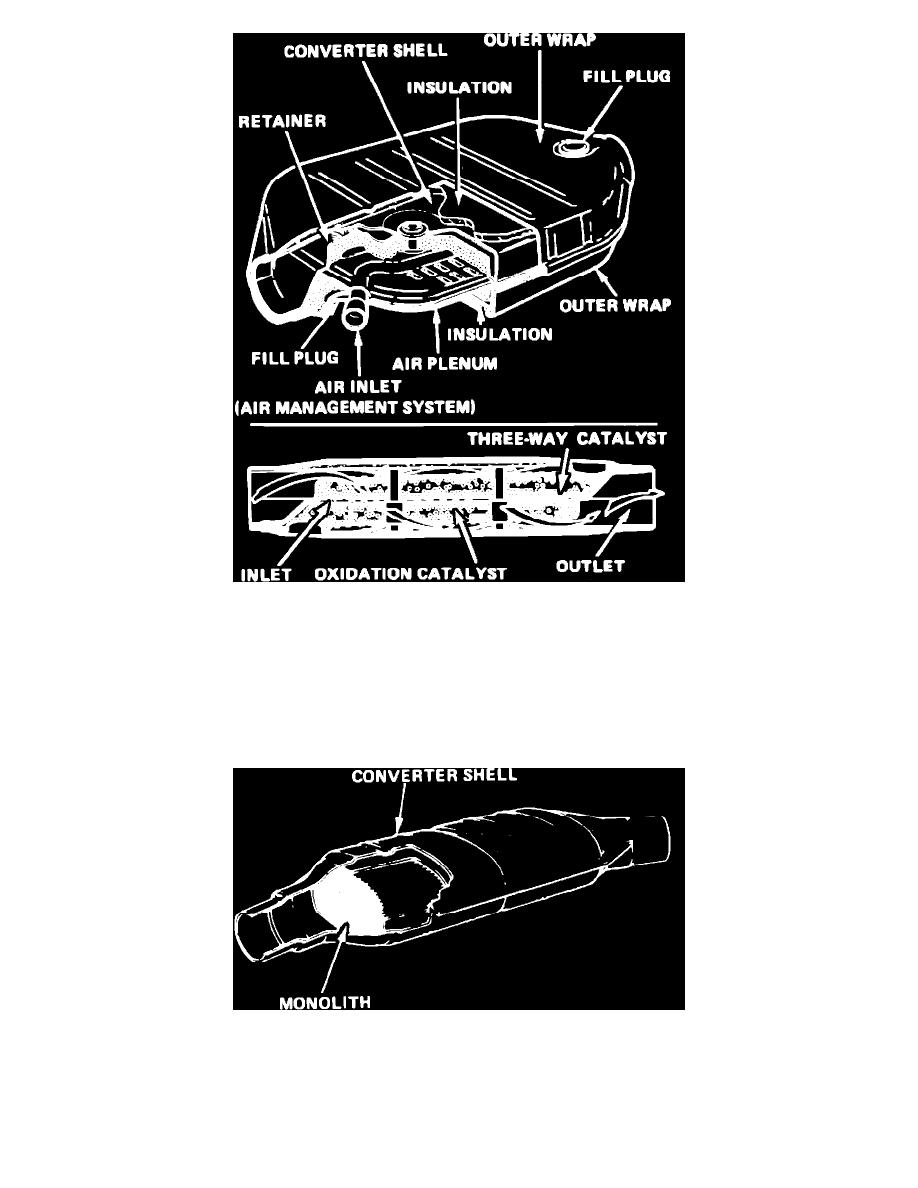Cherokee 4WD V6-173 2.8L VIN W 2-bbl (1985)

Fig. 5 Three-Way catalytic converter
THREE-WAY CATALYTIC (TWC) PELLET TYPE
This type of converter, Fig. 5, contains platinum and palladium as conventional oxidizing agents in addition to rhodium. The addition of rhodium
allows the converter to convert carbon monoxide (CO) and oxides of nitrogen (NOx) to carbon dioxide (CO2) and nitrogen (Ne02).
During operation, as the air fuel mixture is leaned, the converter's efficiency for converting HC and CO increases but decreases for NOx. If the air fuel
mixture were increased, NOx formation would be reduced, but HC and CO would be increased. In order to optimize the simultaneous reduction of all
these pollutants, the carburetor must be able to provide an air fuel mixture of approximately 14.7:1. In order to provide this air fuel mixture, a feedback
carburetor system is used along with this type of converter.
Fig. 6 Monolithic type catalytic converter
CONVENTIONAL OXIDIZING CATALYTIC (COC) MONOLITHIC TYPE CONVERTER
This type of converter, Fig. 6, operates on the same chemical principles as the COC pellet type converter. The catalyst in the converter is a mixture of
platinum and palladium, coated to an extruded material resembling a honeycomb. This converter is integral with the front exhaust pipe.
